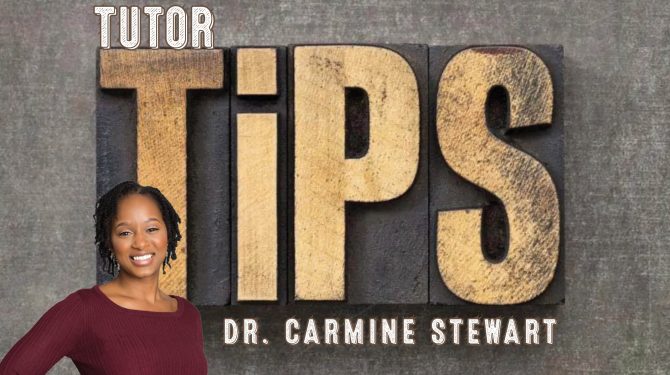Tutor Tips: How to avoid unclear exercises

**This tip originally appeared in the August 2023 issue of Tutor News from Dr. Carmine Stewart, VP Programming**
MASTERY VS. COMPLETION
Many students have been conditioned to focus on completing exercises because completion is one measure of success that many schools use. Think back to your school days…completing bell work, completing and turning in class work, and completing homework were all very important. Often students are so focused on completion that they will work on exercises even if they do not understand them. In these instances, it is okay to explain to students that the goal of learning is to increase their knowledge and understanding, and not necessarily to complete the exercises. Then you can refocus their time and attention on understanding.
Sometimes when you are working with a student you may encounter a problem or exercise that just doesn’t seem to make sense to either of you. In those instances, you may want to try to figure out what the intention was for the lesson, help the student learn the lesson, but maybe not spend so much time on the exercises themselves. Often publishers are working under tight deadlines, so editors miss unclear directions, or fail to eliminate exercises that do not really aid student. Try to keep the student’s goals in mind, and weigh those against the lesson objectives. Here are a couple of examples from a recent experience below:
FUTILE EXERCISES
While working at Seeds East, a student who did not have a tutor stopped me to ask for help with an assignment (see Dictionary Skills). Under exercise 6 it made sense that the publisher wanted the student to become familiar with the dictionary and to know that words appear in the dictionary in alphabetical order. It did not make sense for the student to spend time figuring out which letter of the alphabet (from the letters above) had the most words. The student would spend a lot of time counting, and counting is not a skill that she needs to work on. We skipped Question 2.
UNCLEAR DIRECTIONS
Question 3 asks the student “How many words appear at the top of each dictionary page?” The author’s purpose is to help students see that there are guide words (see Guide Words image) at the top of some dictionary pages. Question 4 then asks the student why they think the words are at the top of each page and leaves room for a short, written response. Unfortunately, the dictionary the student was using did not have guide words at the top of the page that she was on, so those directions made no sense to her. She was also unable to guess why those words were there. That became a teachable moment to show her how to find the guide words and use them to determine if she is on the right page to find a word, but as written, the lesson does a pretty poor job of getting the student there.
DIRECTIONS THAT DON’T SUPPORT THE OBJECTIVE
Under Section 8, the student is directed to “Double the final consonant ‘when you need to’” when adding “ing” endings to a word, but there is not guidance for the student or tutor to know when the final consonant should be doubled, and it assumes that student know what the final consonant is.
Rather than allow the student (and yourself) to become frustrated with a problematic exercise, think about the overall objective of the lesson, and how a student might practically use the skill. Let your Site Coordinator know when you encounter a problematic exercise. Our goal is for students to learn, and not necessarily to spend a lot of time on exercises that do not make sense. Some exercises provide a lot of great practice and the repetition in those exercises are helpful. When that is not the case, please don’t allow the student to spend valuable time on something that is not really helping them learn.
# # #
